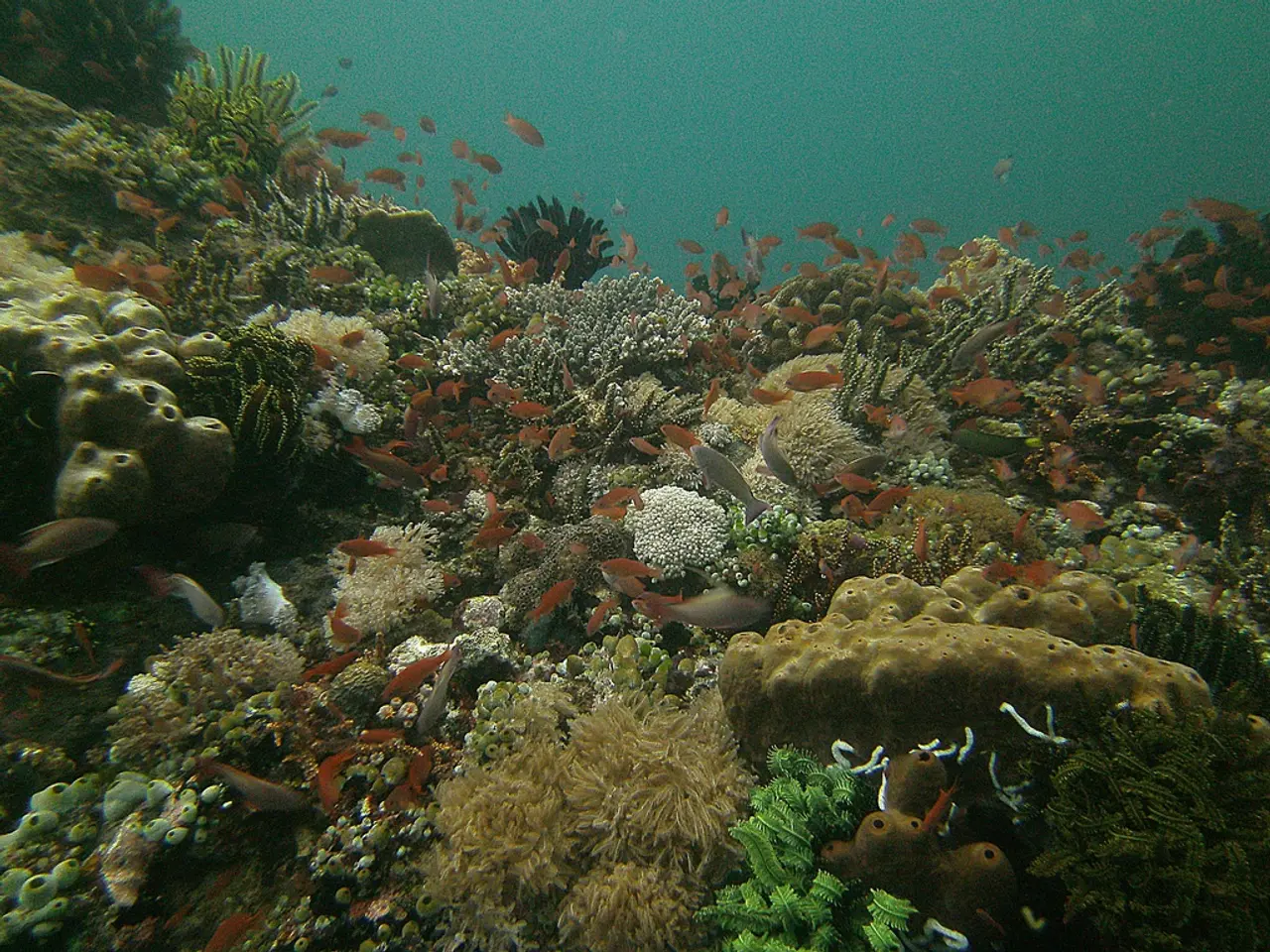Bizarre Shark Species from 340 Million Years Ago Spotted in Earth's Longest Underground Labyrinth
In the depths of Kentucky's Mammoth Cave, a team of paleontologists has made a remarkable discovery - a new extinct shark species named Macadens olsoni. This tiny shark, barely a foot long, lived approximately 340 million years ago during the Carboniferous Period.
The discovery was made within the Ste. Genevieve Formation, a layer of carbonate rock that dates back to the Carboniferous Period. The team, consisting of members from the National Park Service Paleontology Program, Mammoth Cave National Park, and the Smithsonian Paleobiology Department, identified the species by analyzing a unique tooth whorl - a curved spiral of teeth, distinct from any previously catalogued species.
Macadens olsoni was named to honour Mammoth Cave and retired park scientist Rickard Olson, who spent decades mapping subterranean passages and recording stray fossils. The genus name, Macadens, is a nod to Mammoth Cave's informal abbreviation, while the species name honours Olson himself.
This shark species had a distinctive tooth whorl featuring rows on either side of its jaw plus three central teeth in front, adapted for crushing mollusks, worms, and small marine creatures. It is believed to have targeted soft-shelled prey such as mollusks, worms, and other invertebrates that crawled across the Carboniferous sea floors.
Specimens not required for further study will remain where they are, marked for future tours and protected by federal regulations. The team will document fossils in place before carefully extracting small samples for laboratory scans. Back in the lab, high-resolution micro-CT is used to reconstruct the jaw's shape of Macadens olsoni without dislodging fragile material.
Portable 3‐D imaging rigs record tooth position, surrounding sediment texture, and any associated skeletal fragments of Macadens olsoni. These details will be crucial in understanding the shark's ecological role and habitat during the Carboniferous.
Barclay Trimble, the superintendent of Mammoth Cave National Park, stated that the finding enhances our knowledge of ancient marine ecosystems and emphasizes the critical role of paleontological research in national parks. The discovery of Macadens olsoni will feed into public programs that bring school groups underground to learn about geology and evolution.
Macadens olsoni joins over 70 distinct fish species catalogued in Mammoth Cave, including over 40 sharks or shark-like relatives registered in the past 10 months alone. Among the recently discovered shark species is Rotuladens, a species once filed under Helodus and renamed for its wheel-shaped teeth.
Scientists plan to analyze trace elements in the fossilized dentine of Macadens olsoni to reconstruct seawater chemistry during the Carboniferous. This analysis could provide valuable insights into the environmental conditions during the time of Macadens olsoni.
The discovery of Macadens olsoni underscores the importance of paleontological preservation at Mammoth Cave. This world-renowned UNESCO World Heritage Site, once covered by a shallow Mississippian Sea, continues to yield valuable insights into ancient marine ecosystems. Each newly charted corridor in Mammoth Cave offers fresh exposure of the Ste. Genevieve Formation, raising the prospect of more discoveries.
The formal description of Macadens olsoni will include detailed imagery of the tooth whorl and will be published in a peer-reviewed journal later this year. The discovery of this new species adds to our understanding of shark diversity and evolutionary adaptations during the Carboniferous, highlighting the rich paleontological heritage of Mammoth Cave.
- Advancements in technology, such as portable 3-D imaging rigs, are essential for modern research, especially in the field of environmental-science and paleontology, as they help in detailed analysis of fossils.
- The study of ancestral marine ecosystems through research is crucial in furthering our understanding of climate and evolution in the past, paving the way for better knowledge about the future.
- Paleontology is a key part of science, unraveling the secrets of earth's history, including the history of life on our planet.
- Investing in research and preservation of historical sites, such as Mammoth Cave, not only promotes education and awareness about environmental-science but also sustains the rich heritage for future generations.
- The study of chemistry in ancient fossils, like Macadens olsoni, gives insight into the past environment and climate conditions.
- As more discoveries are made in the field of science, the line between lifestyle and scientific advancements often becomes blurred, as people strive to incorporate new findings into their daily lives.
- Data and cloud computing have become essential tools in scientific research, providing the means to store, manage, and analyze vast amounts of information from various sources.
- The food-and-drink industry can benefit from advancements in science by incorporating knowledge about ancient creatures and their diets, which could lead to innovative culinary explorations.
- The adventure of travel is enriched by visits to world-renowned sites like Mammoth Cave, providing opportunities to learn about Earth's history and the significant discoveries made there.
- The business sector can also be impacted by advancements in paleontology, as new discoveries can lead to further study, products, services, or investments.
- Personal-finance management can benefit from the tracking and analysis of historical data, including economic trends and stock market performance, which can help individuals make informed decisions in their financial lives.





